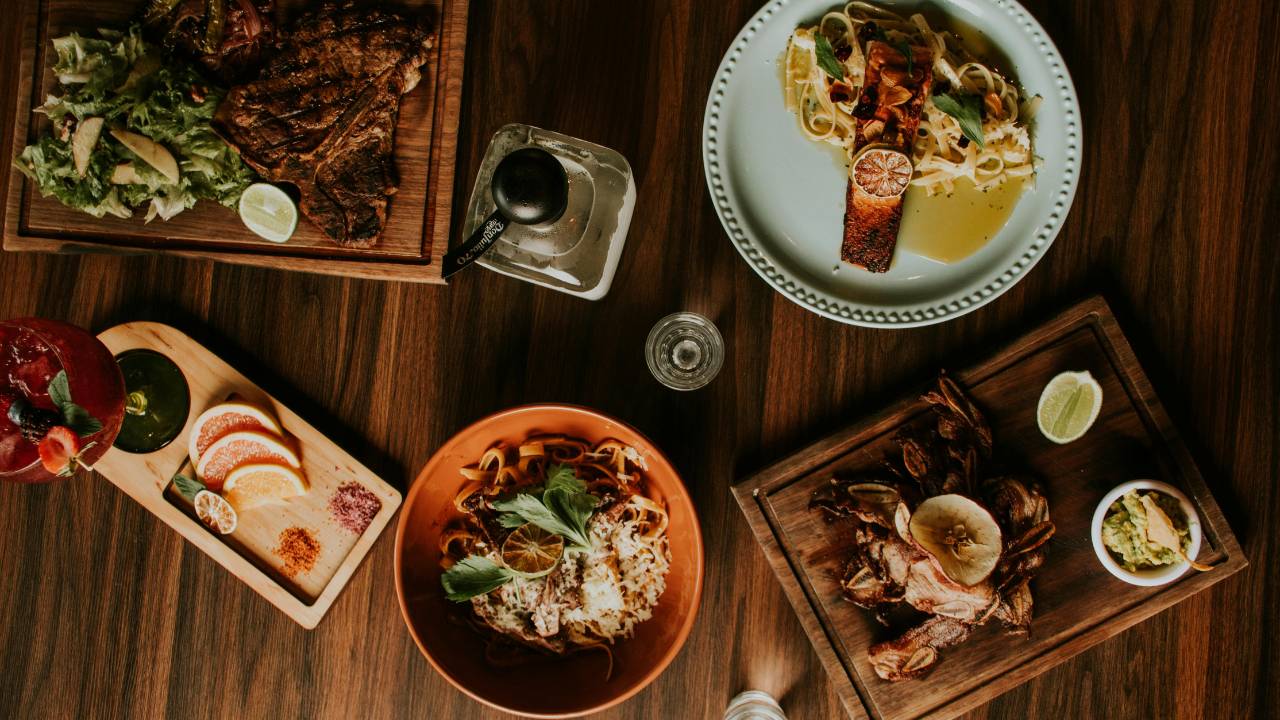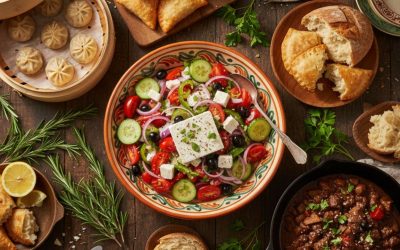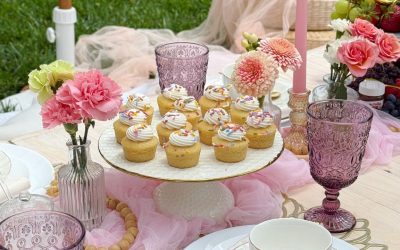Food tastes better when it looks good. Nobody can resist a plate that makes their eyes light up before the first bite. Presentation sets the mood and says something about the care behind every detail. Good food plating is part technique, part theatre, and it is what transforms an ordinary dinner into a story told in color, shape, and flavor.
A growing number of studies agree that food presentation shapes taste perception. Diners report that the same meal feels more delicious when arranged beautifully. Fine dining chefs have known this for decades, but home cooks and casual restaurants are catching up fast.
This guide walks through plating techniques that sharpen your eye for presentation, streamline how to plate food, and push you toward creative food presentation that feels professional yet doable.
10 Essential Food Plating Techniques You Should Know
Mastering plating is like mastering rhythm in music. This means that once you know the beat, you can riff with confidence. These plating tips capture the small details that make beautifully plated food look effortless.
1. Create Height and Structure
Visual excitement starts with elevation. A flat plate says “Tuesday lunch,” while a dish with height whispers “fine dining.” Stack with purpose. Use mashed potatoes or grains as a base to support the main element. A ring mold can help shape layers neatly if you are new to structured plating.
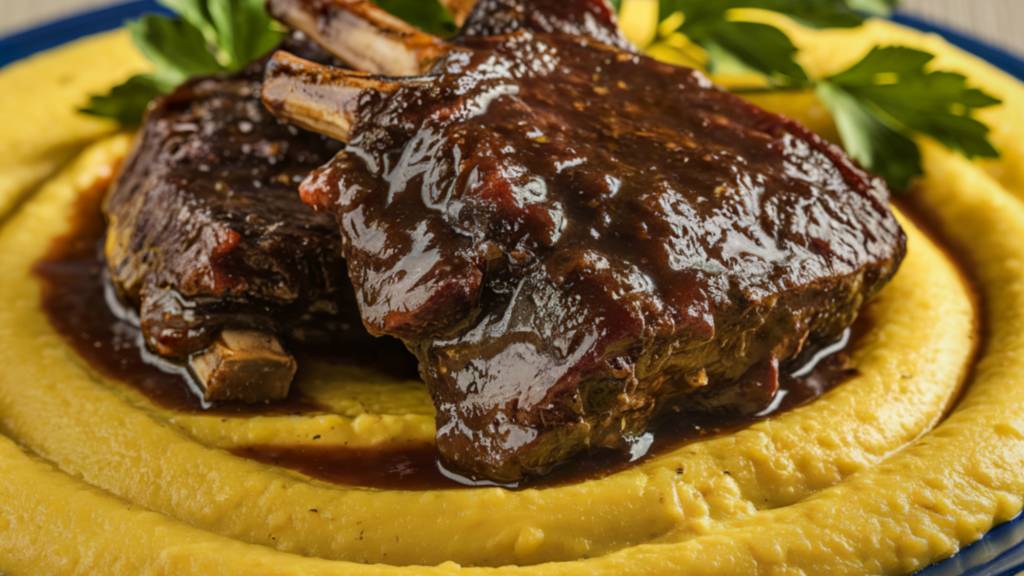
For example, a tender short rib perched on creamy polenta with a drizzle of red wine sauce instantly looks fancier than spreading everything side by side. This kind of creative food presentation adds focus and drama.
Think of your plate as a skyline. Each component contributes to the view, and the tallest building should always be the hero ingredient. Keep it steady so it does not collapse mid-service.
2. Use Color to Inspire Appetite
Color sells flavor long before smell or texture does. The most unforgettable dishes often play with contrast. Deep greens against golden browns, bright reds on a neutral plate, creamy whites beside bursts of orange or pink color pull attention and build appetite.
Chefs in fine dining plating know how powerful it is to use natural color variety. Carrots, cauliflower, and radishes come in shades you do not see in your average grocery bag. Seasonal produce gives you vibrant tones without needing food dye, and it can even inspire new plating palettes drawn from food theme ideas worth repeating.
When arranging food plating, pair colors the way artists handle a palette. Warm ingredients near cool tones create movement, and neutral sauces give the eyes a place to rest. Keep the color story intentional so nothing feels accidental.
3. Play With Texture and Layers
Flat food looks tired. A crisp-on-top, smooth-beneath texture combo wakes up the senses before the fork even lands. Crusts, foams, crumbles, and purees all work together to give the dish depth.
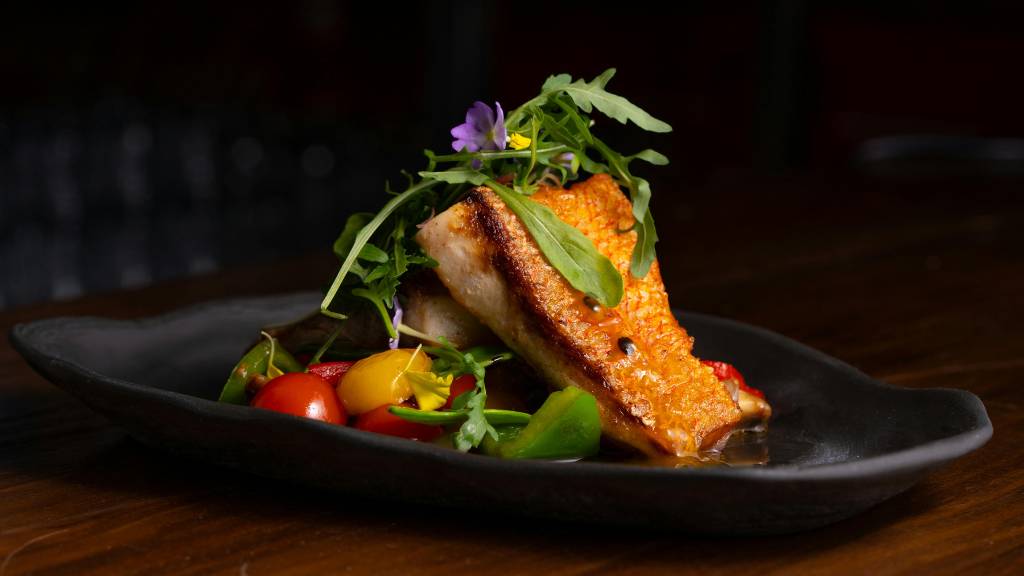
For example, a grilled salmon fillet over silky cauliflower puree topped with toasted crumbs keeps every bite interesting. Modern food plating thrives on texture contrast: soft versus crunchy, glossy versus matte, creamy versus crumbly.
Do not overcomplicate it. Two or three textures are plenty. Each texture should have a purpose beyond decoration, like a crunch that balances softness or a sauce that ties it together. Texture builds dimension that photographs beautifully and tastes even better.
4. Keep Portion and Balance in Mind
Balance is the heartbeat of great food plating techniques. Too much on the plate looks heavy; too little feels stingy. Aim for harmony. Leave breathing space between components so the eyes can rest and the plate feels deliberate.
Picture your layout using the rule of thirds. Place the main item slightly off-center, with supporting sides framing it. Use negative space wisely. Empty space is not wasted; it directs attention where you want it.
Try to limit each dish to about six main elements. Anything beyond that risks visual clutter. Clean balance gives the impression of control and confidence, which is what separates fine dining plating from cafeteria chaos.
5. Choose the Right Plate
The plate is your stage, and the food is the performer. Wrong stage, wrong drama. The size, shape, and color of your plate all influence the story.
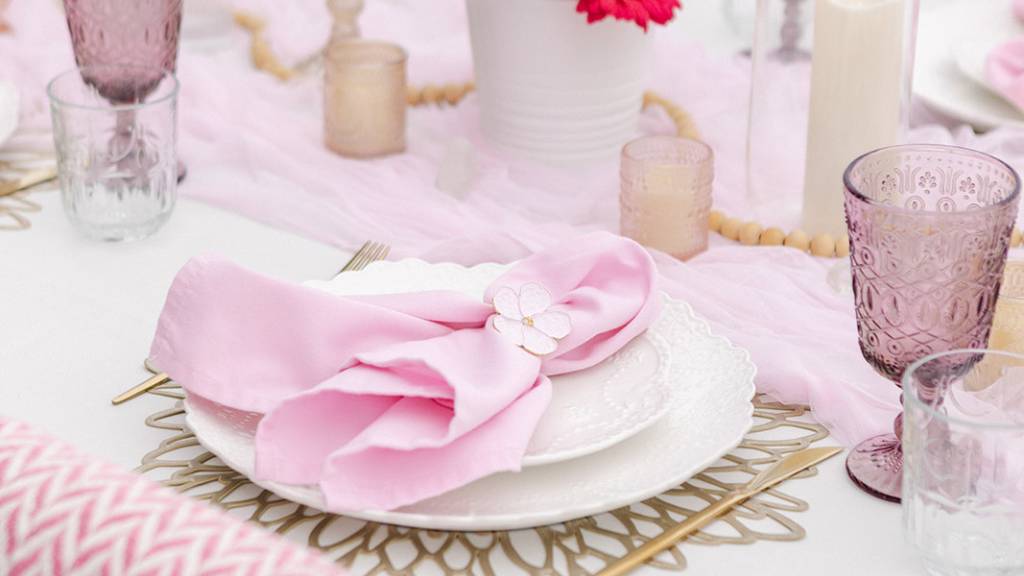
Large plates with wide rims lend a fine dining tone. Smaller plates feel more casual and cozy. White plates let color pop, while dark ones bring moody sophistication. Avoid bright blue; it rarely flatters any ingredient.
Before plating, hold your chosen dish under good light. Does it enhance or steal attention? The right vessel makes creative food presentation easier because it frames your food naturally. Elegant touches like the best cloth napkins for an elegant meal setting can enhance that same sense of refinement at the table. Remember that plating techniques begin long before the first spoon of sauce touches the plate.
6. Use Sauces and Garnishes Wisely
Sauces should guide the eye, not dominate the stage. Spread or dot with purpose. A neat swipe beneath a protein can highlight movement. Dots in a curve can draw attention toward the focal point.
Garnishes deserve the same respect. Use herbs, oils, or edible flowers that add flavor rather than decoration for decoration’s sake. Even small details, like arranging blooms similar to those in stylish bud vases for events, picnics, and everyday spaces, can echo that aesthetic harmony. A bright basil oil can freshen a dish more effectively than a random sprig of parsley.
Fancy plating thrives on control. Every drop and leaf should look as though it belongs. A sauce brush or squeeze bottle gives precision without mess. When in doubt, pull back. A clean design outshines chaos every time.
7. Highlight the Hero Ingredient
Every plate needs a main character. Everything else should play a supporting role that frames and flatters it. This is where thoughtful plating techniques show discipline.
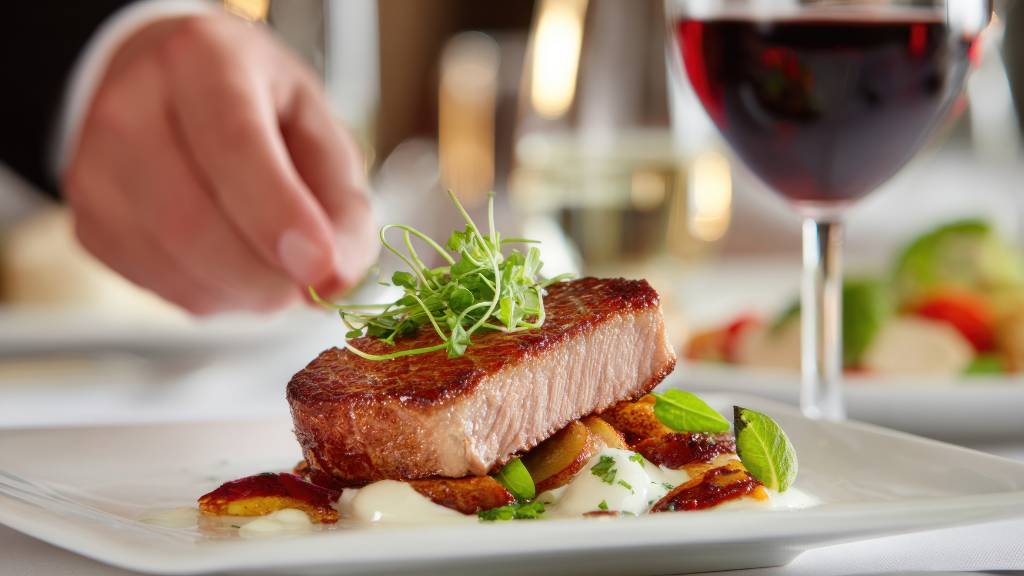
Start with your star item, the steak, the scallop, or even a perfect pie slice inspired by all the different kinds of pie you should know, and position it where the eye lands first. Place sides and sauces to guide the viewer toward it.
In food plating, hierarchy matters. The hero must stand out in texture, color, and position. Avoid covering it with unnecessary garnishes or sauce. Guests should instantly understand what they are meant to adore. Beautifully plated food looks composed, not crowded.
8. Keep It Simple and Clean
Minimalism reads as confidence. Piling on swirls and powders can feel like over-editing a photo. The best plating tips often come down to subtraction.
Choose one focus, two supporting accents, and let them breathe. Wipe plate edges before serving; a single sauce smear ruins the illusion of precision.
Fine dining plating depends on clarity. Think of it as punctuation in writing. Too many commas confuse; too many garnishes distract. A crisp composition says everything you need with quiet authority, just like thoughtful best wine and cheese pairings that balance flavor without cluttering the experience.
9. Match Style to Restaurant Theme
Your plating should echo your restaurant’s voice. A rustic bistro might use hearty mounds of stew in warm bowls, while a modern tasting bar might feature geometric plating and white porcelain. Consistency across the menu builds recognition.
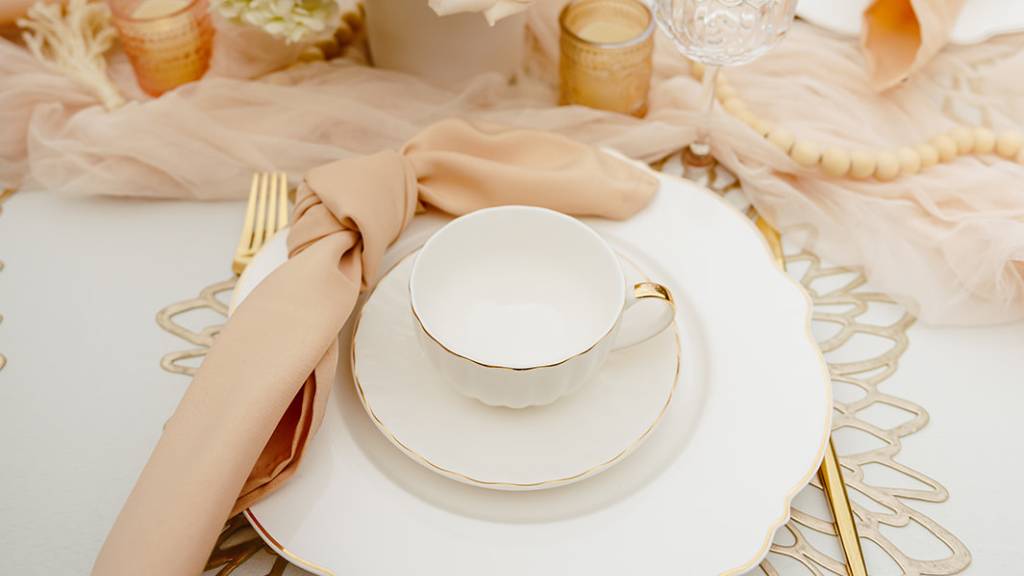
Customers subconsciously connect style with identity. A whimsical dessert served in a casual diner feels odd; a farmhouse salad in a crystal coupe feels forced. Keep your food presentation techniques aligned with who you are.
Some fine dining restaurants work with local artists to design custom crockery that mirrors their ethos. It turns the table setting into part of the brand experience and gives every plate a sense of place.
10. Express Creativity and Personality
Every chef has a visual signature. Plating is where it shines. Do not be afraid to take creative swings. Some chefs splatter sauces for abstract energy, others draw linear trails for minimalist style, and some scatter elements like a painter brushes color on canvas.
Modern food plating celebrates individuality. Experiment with angles, use nature as inspiration, or echo architectural forms. Your approach should say something about you: playful, precise, or daring.
The only rule is control. Even spontaneity looks better when it is practiced. Beautifully plated food reflects both personality and discipline, which together create the kind of presentation diners never forget.
The Art and Discipline of Beautifully Plated Food
Perfect plating sits at the intersection of art and skill. It is not about turning dinner into sculpture; it is about communicating care. Each swipe, sprinkle, and placement tells guests they matter.
Start with small improvements such as tidy lines, smart color contrast, and thoughtful plate choice. Over time, these habits turn into instinct. When that happens, plating stops being a task and becomes a signature move that elevates every service.
Creative food presentation is a lifelong practice, just like good cooking. Keep refining, keep observing, and remember that the plate is your stage and the food is your story. Serve it proudly, and let every bite look as good as it tastes.
Bring this same artistry to your next gathering with Picnic Times. Every setup, detail, and dish is styled to look as beautiful as it tastes.


